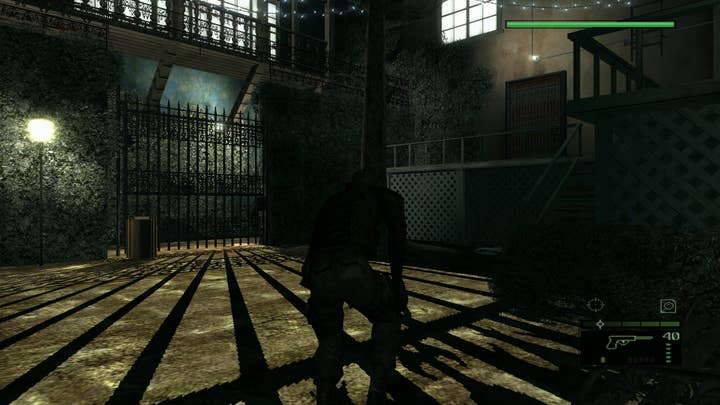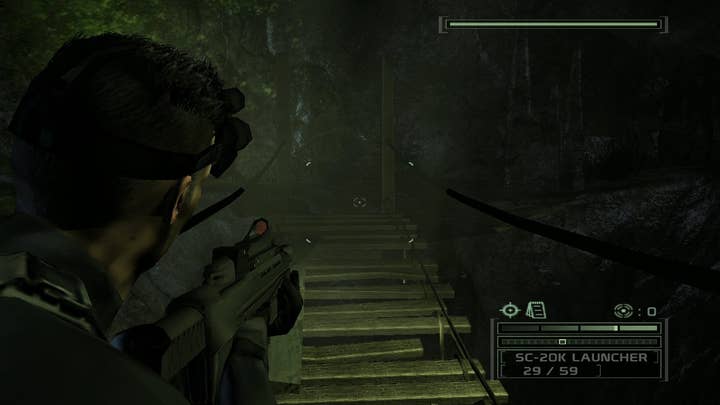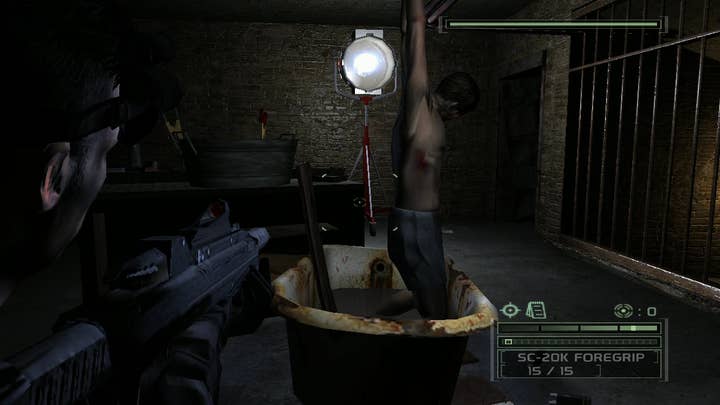Tech Focus: Stranger's Wrath and the Rise of the HD Remaster
The varying approaches to high def remakes of classic console games
The release last week of three Splinter Cell HD remasters for PlayStation 3 is just the beginning of a Q4 schedule packed with high definition re-releases of classic console and computer games. Over the course of the following weeks we can expect to see the likes of Oddworld: Stranger's Wrath, Halo CE, Resident Evil, Ico and Shadow of the Colossus returning to our screens, with more - most likely, many more - to come. The question is to what extent are they merely simple ports, and what more can be done to make them into truly special games that really make the most of the original assets?
The quality of these releases varies somewhat, to say the least. The title that really kicked off the HD remastering trend was Sony Santa Monica's God of War Collection - a superb marketing vehicle for God of War III that saw the first two games in the series ported over to PlayStation 3 by conversion-smiths Bluepoint Games - who, incidentally, are also handling the Ico/Shadow of the Colossus work.
In our original God of War Collection Eurogamer article, we compared Bluepoint's work to both the original games and PC emulation and came to the conclusion that while the core assets were essentially left untouched, the games worked owing to the excellence of the original art, along with improved image consistency (v-sync was enabled) and a higher performance level. The original PS2 God of War games aspired to hit 60FPS - the Collection just about got there.
In short, Sony reinvigorated the old games and offered enhancements that made the titles feel fresh, new and desirable. With the purely backwards compatible route unavailable for most PS3 owners, the approach was a masterstroke, and others quickly realised that there was plenty of money - not to mention promotional opportunities - in creating their own HD ports for the current gen consoles.
That's not to say that all of them are successful though: last year's release of Medal of Honor offered up an "HD remaster" of the game that made the series: PS2 classic Frontlines. The only problem was that the game hadn't been remastered at all - it had merely been ported over, run at a higher resolution and that was it. While the God of War games still felt modern and the original art worked in HD, Frontlines didn't - what could have been a nostalgic look at the origins of the series instead served as a brutal reminder in just how far the first person shooter had evolved. Thankfully the game was a bonus to the new Medal of Honor game as opposed to a full release people would have to pay money for, though EA has just released the game solus on PSN for an eye-watering $15.
Ubisoft's Splinter Cell re-releases are intriguing in that they do offer a significantly improved experience over the original consoles games (with 1080p and 3D support to boot) - but they do so simply because of the existing assets available from the PC versions of the three games on offer (Splinter Cell, Pandora Tomorrow and Chaos Theory). In today's development and publishing environment, it's easy to forget that back in the days of the standard def Xbox and PlayStation 3, PC games were already running in HD, and to get the most out of the advanced graphics hardware, superior assets were required. It's telling that Ubi's promotional screenshots for the new games were actually years-old PC grabs, crudely cropped top and bottom to turn 4:3 screens into widescreen images.




The Splinter Cell HD re-releases exercise those existing assets to create new, "modern" console releases - an extremely canny move from the publisher and one that others are almost certainly likely to follow. Konami, for example, is working on HD remasterings of Silent Hill 2 and its sequel. There are no plans for the original game to get the same treatment mostly likely because there was never a PC version and thus no "HD" assets. However of the three releases, only the most recent Chaos Theory works - artwork and animation in the original Splinter Cell and Pandora Tomorrow don't look so good, and the 1080p modes in those titles merely highlight the deficiencies of the art by present day standards.
There's a third way of course, where budgets permit. Microsoft and 343 Industries are bankrolling an Xbox 360 version of Halo: Combat Evolved, where players can dynamically switch between the original artwork and a brand new engine with state-of-the-art 2011-standard visuals. But even where budgets are limited, some developers are still able to utilise the work done in previous generations to provide a seriously beefed up HD experience: probably the closest thing to an actual "remastering", where the original artwork is repurposed to provide a significantly superior visual look to the original game.
Just Add Water Developments are currently working on an HD version of the Xbox classic Oddworld: Stranger's Wrath. A direct port (with Steam Achievements) is already out on PC, but JAW's PlayStation 3 work is remarkable in many ways. Oddworld has handed over everything ever created for use in its games, opening up a range of new opportunities for an improved experience.
"We took delivery of a copy of the Perforce depot they used to create the game in the first place," JAW's Stewart Gilray tells GamesIndustry.biz.
"So everything, every last scrap of code, asset, you name it, it's there. Which was thankful, as their build process relies 100 per cent on Perforce as their custom scripts and tools actually use the Perforce API to do various things whilst the data is being built. Without that we'd have had no chance."








